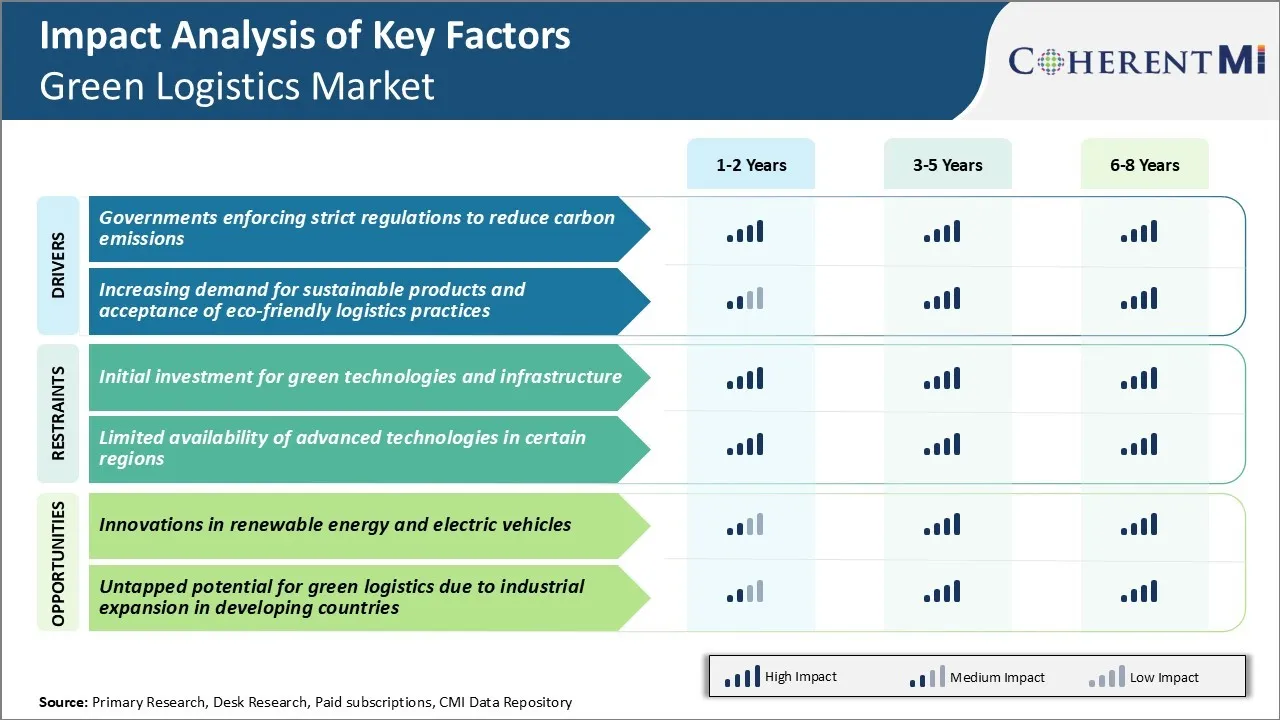Green Logistics Market Trends
Market Driver - Governments Enforcing Strict Regulations to Reduce Carbon Emissions
With growing environmental concerns, governments are increasingly working towards curbing carbon emissions and implementing stringent policies to promote more sustainable practices. Many countries have now set mandatory emission reduction targets and timelines to transition to eco-friendlier solutions.
Following the Paris Agreement as well, several governments have established carbon pricing initiatives using emissions trading systems and carbon taxes. This sends a strong signal that the costs of carbon will continue rising in future, driving the green logistics market.
Many countries in Asia, Americas, and Africa are likewise devising environmental protection laws with mandatory renewable portfolio standards and fleet modernization plans. For green logistics service providers with international operations, it is becoming imperative to build sustainability considerations into core strategies and transition to greener business models.
With governments firmly committed to driving decarbonization across industries, green logistics market will gain further momentum.
Market Driver - Increasing Demand for Sustainable Products and Acceptance of Eco-Friendly Practices
Environmental consciousness among consumers and corporations has been growing tremendously in recent years. More customers now want to purchase products with lesser negative impacts and are supportive of companies taking climate actions very seriously. This rising consumer demand also extends to logistics and expectations around greener delivery solutions.
Retail giants and manufacturers have also set science-based emissions reduction targets to transition their supply chains. In addition, younger demographic cohorts especially have very high sustainability orientations. Environmental issues are among their top concerns and they wish to see organizations contributing solutions.
Businesses recognize the need to align with shifting social values to attract and retain the talent of tomorrow. Those failing to move quickly on sustainability may lose out on future workforce as well as face disfavor from conscious investors. Thereby, adopting green strategies provides an avenue to gain competitive advantages to green logistics market players.

Market Challenge - Initial Investment for Green Technologies and Infrastructure
One of the major challenges faced by the green logistics market is the high initial investment required for transitioning to green technologies and building necessary supporting infrastructure. Adopting renewable energy sources like solar and wind for powering logistics operations and transportation requires setting up generation facilities which have a substantial capital cost.
Developing electric vehicle fleets demands investment in EVs as well as building charging stations at regular intervals on transportation routes. Modifying existing warehouses and distribution centers to make them more energy and resource efficient through measures like LED lighting, HVAC system upgrades, and waste management solutions needs significant capital spending upfront.
The costs of procuring new green technologies can be a barrier for logistics companies and transportation providers to switch to sustainable practices, particularly smaller businesses with limited financial resources. High initial expenses posed challenges to large-scale adoption of clean technologies in the green logistics market.
Market Opportunity - Innovations in Renewable Energy and Electric Vehicles
The growing focus on innovations in renewable energy and electric vehicles presents vast opportunities for the expansion of the green logistics market. Technological advancement has made renewable energy sources like solar and wind more efficient and cost-effective compared to traditional fuels.
Furthermore, rapid product development is occurring in the electric vehicle industry. Major automakers are launching new models of commercial electric trucks and vans for cargo transportation. The driving range of EVs is also enhancing continuously, alleviating range anxiety issues.
Also, startups are developing electric cargo bikes and delivery robots to revolutionize last-mile delivery. These innovations are expected to make clean transportation solutions more viable for logistics operations. They will help reduce costs in the long run and drive higher adoption of emission-free vehicles. The innovation trend will therefore propel tremendous growth in the green logistics market.